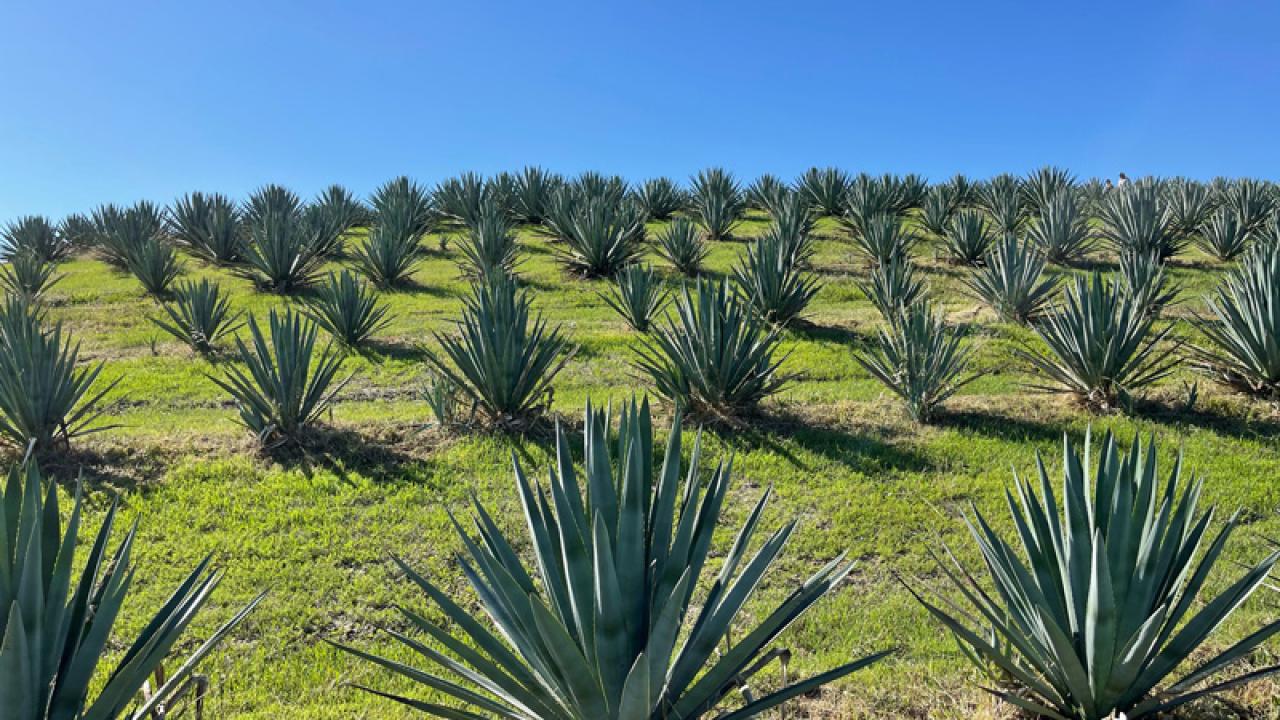
In the Age of Megadrought, is Agave the Crop of the Future in the American West?
Quick Summary
- Raul “Reppo” Chavez surveys his agave crop on a sunny morning north of Sacramento, California. His largest plants sit at the top of a hillside, while the youngest and smallest are down by the road. “They look real good,” he says, nodding.
Raul “Reppo” Chavez surveys his agave crop on a sunny morning north of Sacramento, California. His largest plants sit at the top of a hillside, while the youngest and smallest are down by the road. “They look real good,” he says, nodding.
The plants’ giant leaves are arranged like the petals of open roses, but they’re as sharp as eagle talons reaching out of the earth. Chavez and many others who drive by find the agave field striking. Cyclists out for rides stop to take photos. Mexican-American girls celebrating their quinceañeras pose in glimmering gowns among the plants, which stand out as different from the olive, citrus, and almond orchards typically blanketing the region.
Chavez, a native of Tonaya, Mexico—where mezcal is produced—grew up with agave growing in every direction and learned the skills of a jimador, or agave farmer, from relatives. He’s leasing the plot from a family that used to grow grapes there. Three years ago, the family he works for ripped out the vines in an effort to conserve water and gave him the green light to plant agave.
Now, as the West grapples with the worst drought in more than 1,000 years, he’s among a small but growing group of farmers in California, Arizona, and Texas who are turning to these hearty plants, which can survive with little to no water.
As many farmers in drought-prone regions are re-thinking what they grow, there are some other familiar workhorse crops that require little irrigation and could step in to keep bare land from turning to dust—such as winter wheat, legumes, and safflower.
It’s agave, however, that has captured recent interest and momentum with its promise of drought resilience and a path into the potentially lucrative world of spirits.
A perennial succulent native to the arid Southwest U.S. and Central and South America, agave plants, with spiky leaves as stiff as cartilage, can grow to weigh up to 110 pounds, and the distilled spirits, made from the plant’s hefty heart, or piña, are soaring in popularity.
Full article: https://www.ediblecommunities.com/edible-stories/in-the-age-of-megadrought-is-agave-the-crop-of-the-future-in-the-west/